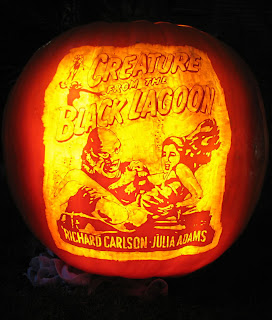
(a putresecent Tom Petty?)
AMC's The Walking Dead had an inglorious offseason, which included the replacement of its writing staff and the subsequent firing of executive producer Frank Darabont. Heading into Season 2, then, the future of the show was looking as grim as the post-apocalyptic scenario it dramatizes. Admittedly, I came to the new arc of episodes worried about a precipitous drop-off in overall quality. Well, the series' midseason finale aired this past Sunday, and at this point I have to say that The Walking Dead isn't what it used to be.
It's even better.
The show obviously qualifies as horror (Greg Nicotero's special fx makeup for the title corpses is eye-popping), with plenty of carnage oh-so-graphically splashed across its canvas. But perhaps the true secret to The Walking Dead's success is its science-fictional sensibilities: its thorough extrapolation of what existence would really be like for human survivors in a world overrun by the undead. This series takes its subject matter seriously (which makes the pop cultural frivolity--for instance, all those silly zombie-themed TV commercials appearing nowadays--that has followed in its wake quite ironic).
For all the behind-the-scenes shake-up, the show's creative vision has been astounding. The storyline has been stocked with "holy shit!" moments, such as the shocking bit of gunplay at the end of the season premiere and the scene of Otis's demise a few episodes later. The plot twist at the climax of Sunday's midseason finale literally made me gasp (it continues to haunt me even as I sit here typing). But the finest aspect of The Walking Dead is without a doubt its cast of characters. Thankfully, the show's writers don't serve up generic heroes and villains but rather multifaceted figures rife with moral complexity. Even a seemingly genteel old-timer like Herschel proves to be the embodiment of American Gothic (never trust a farmer who owns a dilapidated barn!). And Shane has evolved not only into the series' most intriguing character but the best good guy/bad guy combo on cable TV since Tony Soprano.
Let me state it bluntly: there is no better drama series on television right now than this one. If you haven't been following along, I encourage you to use the hiatus (the second half of the season kicks off on February 12) to catch up with the episodes. On a gut-level you will be horrified by the gruesome violence, but you'll also find that there's a slew of intellectual stimulation in store. The Walking Dead is the mindless-braineater narrative for the thinking man.





















